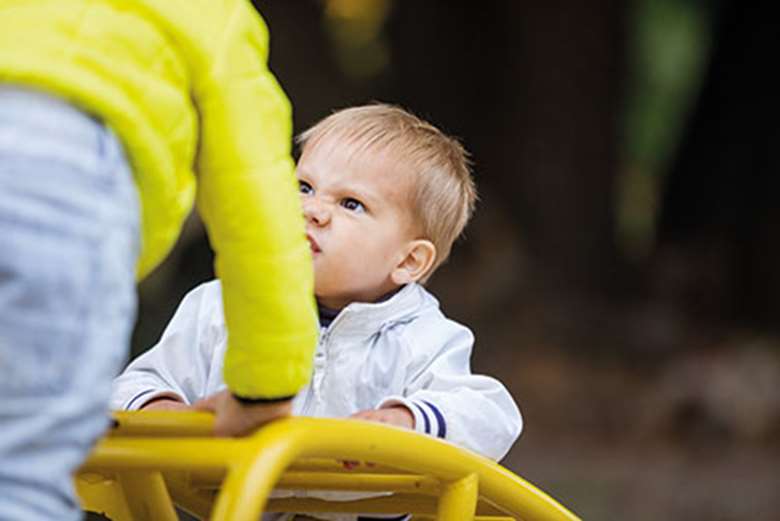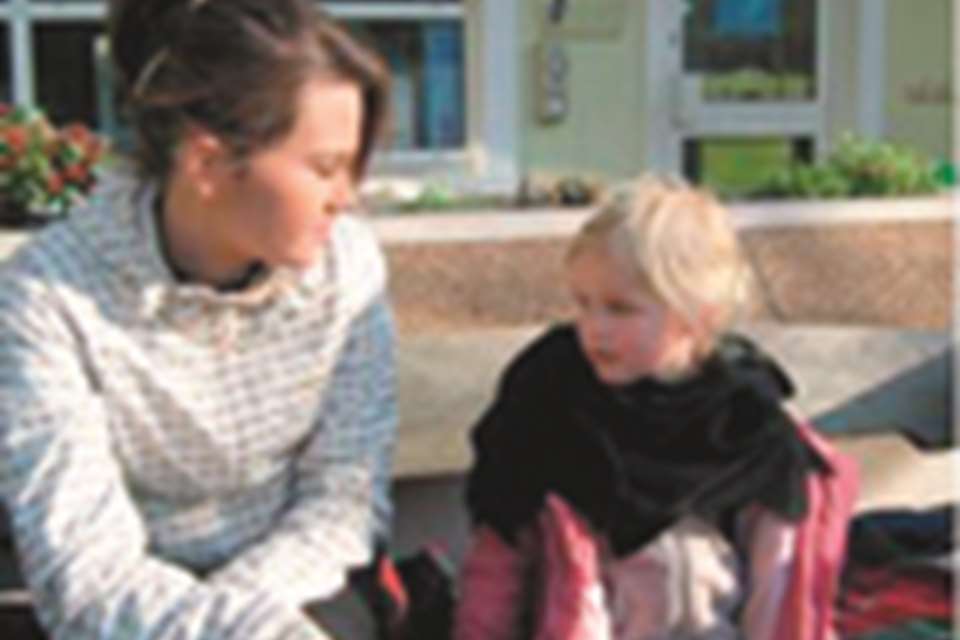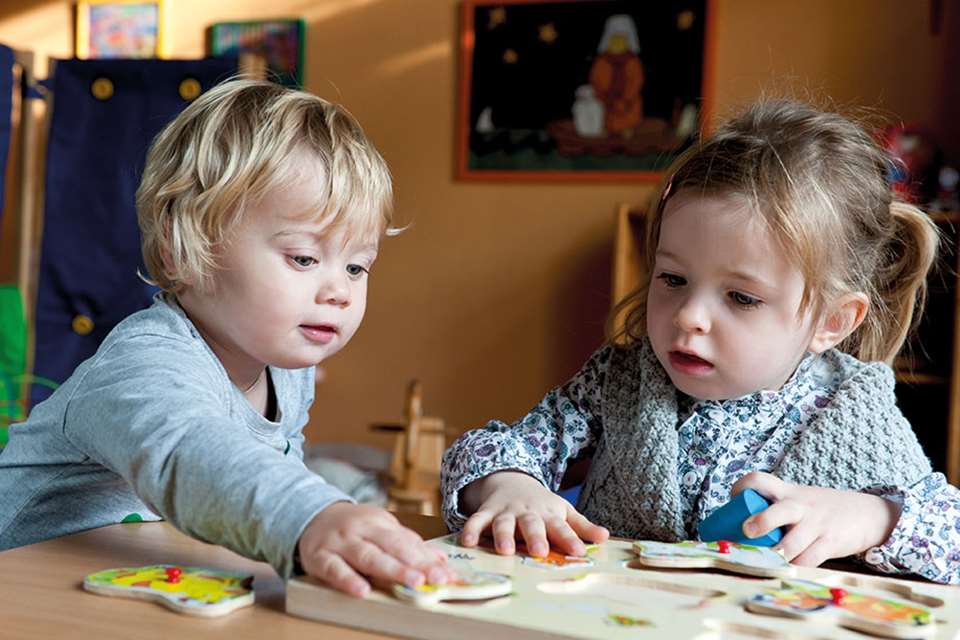Positive Relationships: Behaviour - How cruel?
Caroline Vollans
Monday, October 2, 2017
Ahead of next month’s Anti-Bullying Week, Caroline Vollans examines what bullying behaviour actually is and shows how practitioners can encourage children’s kindness and co-operation

The theme for Anti-Bullying Week 2017 is ‘All Different, All Equal’. Throughout the week, from 13-17 November, the Anti-Bullying Alliance will be helping schools to focus on what makes each child and young person unique, with the clear message that one’s difference or particularity should be a reason for celebration – not for being picked on or bullied.
The ethos of the alliance is that every child should be accepted equally in school, thus making it a safe environment for them to be in. To feel safe, every pupil needs to be free and able to be themselves without the fear of being harassed or isolated.
Its national co-ordinator, Martha Evans, explains, ‘When we spoke to children, again and again they told us they wanted Anti-Bullying Week to focus on celebrating what makes us all unique. Being able to express yourself should be every child’s right, free from fear of bullying or ridicule, and yet many children struggle to find that acceptance.
‘We’re looking forward to seeing how schools take action to put this right, and showing how we are “All Different, All Equal”. The Anti-Bullying Alliance will support schools with a selection of free activities that will help them to act in preventing bullying and creating safe environments for their pupils.’
But what of children in the early years? Can they be considered bullies or capable of bullying? Is this notion too heavy-handed with ones so little – ‘bully’ and ‘bullying’ are strong and pejorative words.
MALEVOLENT INTENTION?
Adults often comment, with both astonishment and regret, how cruel even very young children can be. Regarding physical differences, young children can be experts in noticing and being outspoken about what is ‘not the same’ or stands out as different. They might be found staring or commenting unpleasantly at someone with a strawberry mark, an unusual gait or a speech difficulty.
It is fundamental, however, for early years practitioners to understand that not every case is necessarily done or said with unkind or malevolent intention. Conversely, it can be a typical aspect of the child’s curiosity and awareness of differences – a quality, indeed, not to be discouraged.
Similarly, many children go through a stage when they might grab, kick or bite when wanting to claim a toy that another child is playing with. While these incidents can be expected as the stuff or ordinary day-to-day life with young children, it is not uncommon for such cases to be spoken of or even recorded as bullying. That is not to say, of course, that this behaviour should be ignored but, equally, the child should not be categorised as a bully.
The Anti-Bullying Alliance, in its top tips for early years staff, makes it clear that ‘this is an unhelpful label and says something that you are rather than a behaviour choice you can change.’ It is never helpful to ‘fix’ a child with a label.
According to the alliance, for behaviour to be considered bullying it must fulfil four criteria:
- It is hurtful.
- It is intentional.
- It is repetitive.
- It involves a power imbalance.
SCRATCH AND PINCH
It seems bullying has become a generic term, often used loosely to refer to bouts of meanness, unkindness or nastiness. The definition of bullying (that is, intended and repeated provocation) describes something very different from a very young child’s impulsive hitting to get a toy or making a frank comment on how someone looks. Behaving cruelly, in itself, is not bullying.
Early years pioneer Susan Isaacs, writing as Ursula Wise in her Nursery Worldparenting column in the 1930s, offers advice regarding this matter. A mother, concerned about the cruelty she has witnessed in her young child, writes to Wise, ‘… he will look at you quite nicely, or even stroke your face, and then suddenly scratch it or twist your nose or ear, though he knows it is painful’.
Wise’s response to her correspondent is a reassuring one, ‘This aggressive behaviour in a very small child is always distressing to us, partly because it is startling and unpleasant in itself, and partly because it makes us afraid that the boy will develop abnormally and become very cruel. But this does not in fact follow. There are quite a number of small children who have these aggressive phases in which they scratch or pinch.’ (Nursery World, December 1931).
Though developmental, at least in part, it is important that these not-uncommon incidences of ‘unkindness’ and ‘nastiness’ are challenged and worked with in the early years – such behaviour is not acceptable and must be addressed. There can be a fine line between what starts out as minor teasing, for example, and what may (imminently or later in life) develop into something more sinister.
ADULT VALUES AND MODELLING
While praising positive behaviours and modelling them is important, it is even better if adults treat the nursery as a community where they make a point of living by the values of kindness, co-operation and tolerance, not only role-playing them.
Engaging in this sort of work should run through the day – how to speak nicely to each other, helping children realise when they upset and hurt their peers, supporting them to comfort another child, apologising in meaningful ways (as opposed to that ‘sorry’ that trips off the tongue), and so on.
While these points may sound obvious and ‘nothing new’ in terms of policy or practice, what might not be so prevalent when thinking about behaviour and bullying is the issue of adult-to-adult behaviour.
Adults’ interactions with colleagues and parents constitute a substantial aspect of the child’s social environment and will influence hugely their ideas about how to treat each other: they will witness and pick up on what is acceptable and what is not, what works and what does not. Though it may be tough to admit, members of staff can behave towards each other in ways that would not be found acceptable between children, sometimes unwittingly, sometimes knowingly. Staff bullying is known to be prolific in institutions.
Discordance between colleagues is, of course, to be expected. But if children witness thoughtful interactions and sophisticated ways of dealing with difference and conflict among the adults, the effects are likely to be very positive. This is especially important for children brought up in an aggressive, abusive and non-respectful environment.
Conflict resolution, however, can be a challenge for both children and adults – as the HighScope website notes, ‘In all early childhood programs, children have conflicts over space, materials, and friendships. Learning how to find solutions that work for everyone is an important learning experience for young children. Given that adults are not always effective at social problem solving, it is no wonder that this area poses a substantial challenge for young children. It is also a major concern among practitioners, many of whom have not been trained to deal with this daily occurrence.’
AN END TO IT?
It can be tempting to think ‘dealing’ with conflict supposes that all conflict can be resolved: resolved, that is, in terms of being erased, ended. The reality is that not all inter-personal conflict can be resolved: it must be lived with, it is inescapable. What is important, then, is to accept this premise and then help children begin to find ways of responding to differences and conflict in ways that are not destructive, damaging or even devastating.
Books, stories and dolls often provide ways in to explore difficult topics, such as getting on together (or not) and developing empathy irrespective of this. They can also be a useful means of introducing the expression of a range of feelings and states of mind – not only what might be regarded as the ‘positive’ ones (happiness, kindness, generosity, empathy, friendliness), but also those potentially more difficult emotions (contrariness, anger, jealousy, sadness, hurt). Highlighting the importance of an array of emotional states can help reassure children and give them ‘permission’ to express them in nursery. This, too, is a key factor if offensive treatment or bullying is going to be detected.
If, from a very young age, children are immersed in environments that actively encourage them to notice difference, engage with it and applaud it, then this is likely to bode well for their future. We often hear children being told to ‘Stop looking’, ‘Don’t point’ or ‘Ssshh!’. However, acknowledging difference and exploring it could be the first step away from the prejudices that ensue from a fundamental denial of our differences, singularities and disparities. It would seem, then, that the early years is the ideal place to start work of this kind. This may enable the children not only to tolerate differences and manage conflicts, but see the necessity and value of them.
Caroline Vollans is a teacher and psychoanalyst
MORE INFORMATION
Get involved at: www.anti-bullyingalliance.org.uk and @ABAonline
https://highscope.org/curriculum/preschool/details
[asset_library_tag 1594,Download the PDF]







